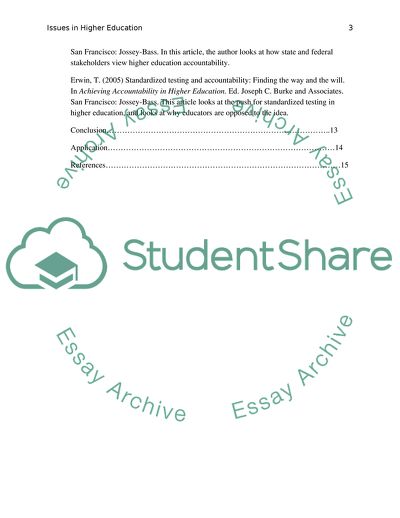Cite this document
(Issues in Higher Education: Globalization, Technology, and Accountability Literature review Example | Topics and Well Written Essays - 3250 words - 1, n.d.)
Issues in Higher Education: Globalization, Technology, and Accountability Literature review Example | Topics and Well Written Essays - 3250 words - 1. https://studentshare.org/education/1798795-describes-the-three-higher-issues-of-accountabilityglobalization-and-technology-that-will-most-significantly-impact-higher-education-in-the-near-future
Issues in Higher Education: Globalization, Technology, and Accountability Literature review Example | Topics and Well Written Essays - 3250 words - 1. https://studentshare.org/education/1798795-describes-the-three-higher-issues-of-accountabilityglobalization-and-technology-that-will-most-significantly-impact-higher-education-in-the-near-future
(Issues in Higher Education: Globalization, Technology, and Accountability Literature Review Example | Topics and Well Written Essays - 3250 Words - 1)
Issues in Higher Education: Globalization, Technology, and Accountability Literature Review Example | Topics and Well Written Essays - 3250 Words - 1. https://studentshare.org/education/1798795-describes-the-three-higher-issues-of-accountabilityglobalization-and-technology-that-will-most-significantly-impact-higher-education-in-the-near-future.
Issues in Higher Education: Globalization, Technology, and Accountability Literature Review Example | Topics and Well Written Essays - 3250 Words - 1. https://studentshare.org/education/1798795-describes-the-three-higher-issues-of-accountabilityglobalization-and-technology-that-will-most-significantly-impact-higher-education-in-the-near-future.
“Issues in Higher Education: Globalization, Technology, and Accountability Literature Review Example | Topics and Well Written Essays - 3250 Words - 1”. https://studentshare.org/education/1798795-describes-the-three-higher-issues-of-accountabilityglobalization-and-technology-that-will-most-significantly-impact-higher-education-in-the-near-future.


